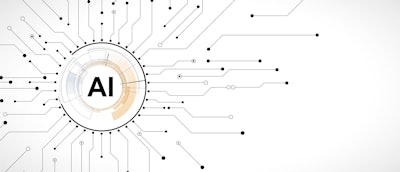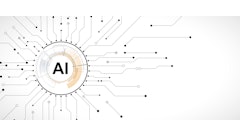
AI is everywhere. Every software demo promises transformation. Every conference keynote touts revolutionary capabilities, but where are the results?
Here is the reality: 78% of organizations now use AI in at least one business function, more than 80% of these businesses report no meaningful impact on their bottom line, and 30% of IT leaders admit they invested in AI too quickly. Despite these results, nearly half of enterprise buyers have switched software providers to incorporate better AI features.
Here is a sobering reality in procurement, only 1% of organizations successfully scale their AI initiatives beyond pilot programs. The difference between organizations that achieve 5 times ROI and those that struggle with basic implementation comes down to architectural foundation.
Success cannot solely rely on AI features or implementation budgets. Organizations aiming to achieve real value with automation must understand that AI cannot be retrofitted into legacy systems; AI must be designed from the ground up.
Why AI-native architecture beats retrofitted solutions
Most procurement platforms approach AI like retrofitting a home built without central systems. They take platforms designed years ago and add AI features the same way you would install window units in each room; it might make individual spaces functional, but the whole house remains fundamentally flawed.
Platforms built before 2022 face the same insurmountable barriers as homes without proper ductwork, electrical capacity, or structural planning. Their data structures were designed for manual processes, like homes built for fireplaces and fans. Their interfaces assume human oversight at every step, similar to rooms that need individual heating and cooling units. The workarounds required for intelligent automation in these systems are as complex and inefficient as running extension cords and exhaust hoses throughout a house never meant to support modern systems.
This patchwork approach creates fundamental limitations that no amount of engineering can overcome. You can add all the window units you want, but you will never achieve the seamless, whole-home comfort and efficiency of a system designed with central intelligence from the ground up.
AI-native platforms work differently. Every data structure anticipates machine learning, every workflow assumes intelligent automation, and every user interface is designed for human-AI collaboration from day one. While legacy systems require hours of manual RFP analysis, complex approval routing, and disconnected supplier data, AI-native platforms transform this same process into seconds of guided interaction with unified intelligence across all procurement activities.
Consider the difference in real implementation. Organizations using retrofitted solutions spend months configuring workarounds, training users on complex interfaces, and managing data inconsistencies. AI-native implementations deliver immediate value because intelligence is built into the foundation rather than bolted on afterward.
This architectural advantage might explain why 99% of enterprise AI initiatives fail to scale beyond pilots. Organizations using retrofitted solutions hit walls that AI-native platforms simply do not have.
From predictive to proactive: The evolution of procurement intelligence
Procurement AI is evolving through three distinct waves, and most organizations are still working through this progression. Understanding where your organization sits in this evolution matters because each wave requires different architectural capabilities:
Wave one brought basic automation. Supplier data gets enriched automatically. Request summaries appear without manual input. These predictive capabilities save time but still require human oversight for every decision.
Wave two is introducing conversational interfaces. Procurement teams can ask questions and get instant answers from contracts and documents. Instead of scrolling through lengthy agreements, users simply type their question and receive relevant information immediately.
Wave three is emerging with intelligent agents that will handle end-to-end workflow orchestration and autonomous task execution. These systems will launch sourcing events, collect responses, and perform initial analysis without constant human intervention.
Organizations successfully implementing these advanced waves are seeing dramatic operational changes. A global provider of railcar leasing and service, for example, reduced RFP production time from months to minutes while capturing $3.5 million in contract savings. Other leading enterprises report that business stakeholders now independently manage sourcing events that previously required specialized procurement expertise. Global teams collaborate seamlessly across languages, with suppliers responding in their native language while executives receive real-time summaries in theirs.
It all boils down to this: Only AI-native platforms can support all three waves effectively. Legacy systems may handle basic automation, but they will continue to struggle with conversational interfaces and cannot support autonomous agents without extensive workarounds.
Implementation that actually works
Most organizations struggle with AI implementation because they focus on technology features rather than business outcomes. Here is what organizations achieving real value do differently:
- Start with pilot programs that solve specific pain points. Instead of enterprise-wide rollouts, identify one workflow that causes the most friction. Common starting points include supplier onboarding delays, manual RFP creation, or contract clause searches. These focused pilots demonstrate clear value without overwhelming users or IT resources.
- Choose problems where AI creates immediate impact. Target processes that currently require hours of manual work but could be automated in minutes. Request routing that bounces between departments for days can become instant with intelligent intake. Supplier data that requires manual research across multiple websites can be enriched automatically.
- Build trust through transparency and training. Users need to understand exactly how AI applications benefit their daily work. Provide clear explanations of what the technology does and why it makes jobs easier. Offer hands-on training sessions where stakeholders can see immediate improvements in their workflows.
- Measure what matters for business impact. Track cycle time reduction from initial request to final completion. Monitor adoption rates across different user groups and departments. Most importantly, measure how much time procurement professionals can shift from administrative tasks to strategic initiatives like supplier relationship management and category strategy.
- Plan for architectural scalability from day one. Organizations achieving lasting success choose platforms built for intelligence rather than retrofitting existing systems. This foundation allows progression through all three waves of AI evolution while avoiding the integration challenges that derail most implementations.
The choice facing procurement leaders today is not whether to adopt AI, it is whether to build on a foundation that can evolve with the technology. Organizations continuing to retrofit legacy systems will find themselves perpetually steps behind others, managing workarounds while their competitors operate at speed with seamless intelligence. The 1% who successfully scale AI initiatives share a common thread: they recognized that true transformation requires platforms designed for intelligence from the ground up, AI-native solutions. As procurement AI enters its third wave of autonomous agents and end-to-end orchestration, the architectural decisions made today will determine which organizations join the ranks of those achieving 5 times ROI and which remain stuck in pilot purgatory. The window for building on the right foundation is closing, but for those who act decisively, the opportunity to fundamentally transform procurement operations has never been greater.




















